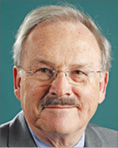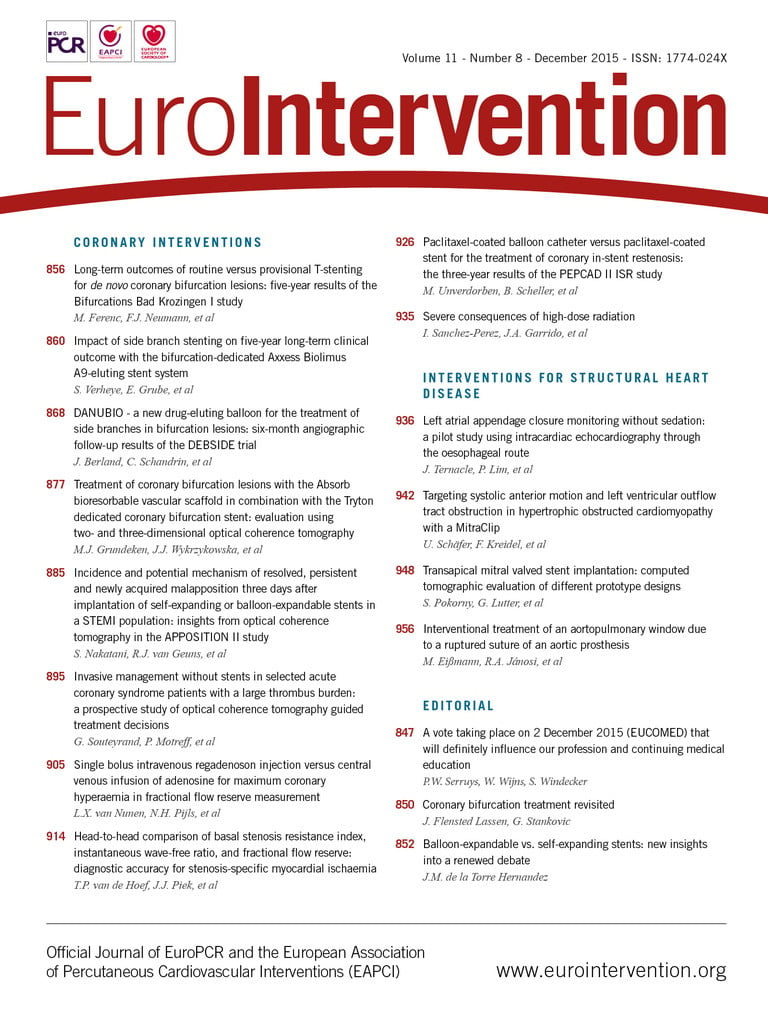
An editorial commentary from the Editor-in-Chief is a privilege that cannot and should not be misused as to some extent it represents the views of the readers, of the Editorial Board and of the entire interventional community also represented by the EAPCI and PCR. This privilege may one day be regulated like so many other of the privileges that we were accustomed to have in the past1. However, today this privilege exists and gives us the right and the duty to inform the community to which we belong.
Eucomed
Eucomed is an alliance of European medical technology industries in Europe. Eucomed represents “around 25,000 designers, manufacturers and suppliers of medical technology used in the diagnosis, prevention, treatment and amelioration of disease and disability”, and their mission is “…to make modern, innovative and reliable medical technology available to more people.”2
Eucomed has proposed to all their members to adhere to a new code of conduct that proposes a controlled framework governing industry sponsorship with the aim to withdraw direct sponsorship for all health care professionals attending conferences and aiming also to limit indirect sponsorship. This may significantly impact the future of continued medical education (CME), create major restrictions for smaller meetings and have a severe impact on larger conferences. For example, attendance at conferences and meetings will become more complicated: individual attendance will become more difficult with new finance models emerging through third parties such as teaching hospitals, scientific societies, congress organisers and other institutions. Costs for projects will be questioned in greater depth, with the need to prove fair market value for all services from catering through to speaker fees.
Opening the dialogue
On October 21st we met with Eucomed at the Sheraton Hotel at the Charles de Gaulle Airport in Paris (France). Representing Eucomed were, amongst others, the Chairman, Rob ten Hoedt and Chief Executive Serge Bernasconi. Representing the physicians’ community were William Wijns, Chairman of PCR, Jean Fajadet, Director of EuroPCR, Jeroen Bax, President-Elect of the European Society of Cardiology (ESC) and A. Pieter Kappetein, Secretary General of the European Association for Cardio-Thoracic Society (EACTS). I attended the meeting in my position as an ex-officio EAPCI Board member through my Editor-in-Chief role at EuroIntervention, the official Journal of the Association, EAPCI.
We physicians acknowledged, at this meeting, the efforts made by Eucomed in drafting a new code. However, we feel that the proposed code as it stands today has been written “by and for” industry without consultation from the physicians. This meeting was in fact the first open dialogue between the cardiovascular health care physicians (HCP) and Eucomed. The representatives from Eucomed countered that the recommendation was issued in September 2014 and that discussions had been ongoing with health care organisations (HCO) such as the ESC, but not directly with physicians. Despite this comment, we believe that the code is a one-sided document, which cannot lead to an optimal solution. We noted also that the drafting of the proposed code has provoked a lot of confusion and misunderstanding within our professional community.
It is often forgotten that congresses were primarily created and driven by physician’s needs and that this is especially the case in the field of device-based therapies. There is a need for a forum of exchange between physicians in order to properly implement and evaluate pharmaceutical and device therapies in clinical practice. We therefore raised concerns regarding access and attendance to educational events, which could be reduced by as much as 30 to 50%. The risks and potential harm associated with an anticipated gap in continuous medical education and training will have a direct impact on patient access to care, increased risk of inappropriate use of devices, lower safety of procedures and worse outcomes.
We expressed our concern that this new code could open the door to “company-sponsored medical education”. We strongly believe that independent medical education is essential for the dissemination of knowledge, evaluation of available evidence, rating of new evidence and identification of gaps of evidence. This exercise also provides an independent source of information for policy-makers and hospital administrators. Rob ten Hoedt responded by saying educational grants would be made available to hospitals, scientific societies and other healthcare organisations (HCOs) to select and support the physicians who would attend the conferences. This new system will call for educational grants to be made public, the name of the company and the subject of the grant will be made public, providing transparency as to the extent of financial support of the industry to medical education.
Rob ten Hoedt gave an example of why direct sponsorship can be perceived by the public as an issue in creating inappropriate interactions. This perception is the reason why industry as a whole has to find other ways to sponsor the international and national societies as well as the right congresses. The sticking point is how and by whom and by what criteria good/right vs. bad/wrong congresses are to be judged and how are smaller focused meetings to be defined and judged as well?
Eucomed mentioned briefly their conference vetting system (CVS), its scope and the criteria aimed at not only assessing conferences but also to rule out inappropriate congresses. I commented that the debate concerning location/venue (mountain vs. seaside) is irrelevant, and that it is much more important to look at the quality of congresses themselves with the quality of their speakers and the educative value of the programme. On this point, we, as representatives of the medical community, all agreed that high-quality CME is essential and that, in the end, it is the participants who will appraise the value of congresses for their daily practice.
At a certain point, we asked Eucomed whether an economic assessment or prediction of the consequences of a positive vote had been performed to evaluate the expected repercussion of a decrease in attendance at various scientific meetings. The response was that no financial investigation had been performed or planned; in addition to this point, some of our colleagues were concerned whether the financial investment of industry in education would remain at the same level. Rob ten Hoedt assured the group that this change in the code of ethics “would not negatively influence the commitment of industry to fund and support education”.
We also mentioned that this new proposed code is probably too Eurocentric, and that it could lead to a gradual decline in congress attendance, similar to what has been seen at the American College of Cardiology and the American Heart Association meetings. In fact, we might also see a displacement of the centres of academic teachings to areas located outside of Europe. Moreover, the new code will probably not affect key opinion leaders, but will affect the more vulnerable categories of healthcare professionals such as younger colleagues, nurses and technicians. The juniors of today may not benefit from the grants allocated to hospitals, especially at the early stages of their careers, nor will nurses and allied professionals. We should realise that some of these juniors will become the leaders of tomorrow and that best practices depend on teamwork.
The next steps
Eucomed representatives reiterated that the meeting and vote on the 2 December 2015 is an internal industry vote, and that it is not a start date for phasing-out direct sponsorship as the code foresees that the phase-out will begin on 1 January 2018. We as physicians again noted that there remain many unresolved aspects in the new code and that the medical societies are not ready for this abrupt change, hence our plea for a postponement to 2019.
The challenge of tomorrow is to develop the right model and funding mechanisms and channels so that HCP as well as nurses, technicians and allied professionals are being invited by Course or Programme Directors to present their scientific or clinical output at national and international meetings. Sharing knowledge, skills and expertise is at the heart of CME, and is in the best interest of individual patient care.

